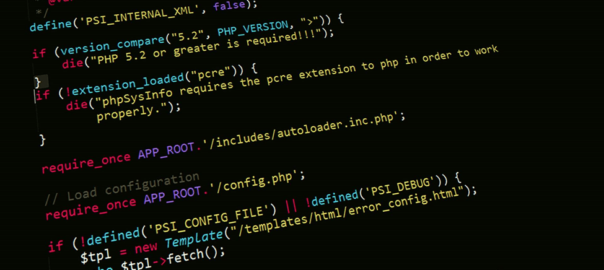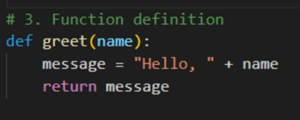In the programming world, indentation has been essential for structuring code. Unlike most languages, which use braces and keywords to mark code blocks, Python uses whitespaces and indents only to distinguish code blocks as they return.
Such a feature is crucial to how Python programs are written, read, and executed, as well as the heart of the role of the language in the world of programming. This article unravels the mysteries of space and invades the indentation of Python, importing its rules, benefits, and shortcomings and giving the techniques for their use.
What is Indentation in Python?
Indentation in Python involves a leading space at the top of the line of code. Others use it to set the depth and arrangement of code fragments, e.g., loops, function definitions, and other conditional sections. Generally, indentation is the function that determines which chunks of code a particular block belongs to, as it is the fundamental element of Python syntax.
Rules of Indentation in Python
Python employs consistent, strict indentation to ensure readability and clarity of code. Here are the primary rules governing indentation in Python:
- Spaces vs. Tabs: To follow the best practices, Python suggests using spaces instead of tabs, as they can cause inconsistencies between different devices, and editors in the documentation section on indentation state that four spaces per indentation level should be used. While spaces and tabs are allowed and provide a suitable format, they can only be implemented in the first file if used constantly.
- Indentation Level: The main standard requirement is that four spaces be indented in the code for each indentation layer. This rule, nonetheless, is more of the ornamental linguistic convention without being the law of the language.
- Consistency: A code block’s indentation must be the same within the code block. An indentation error will be produced by indenting each consecutive line correctly and following the rules of mixing spaces and tabs or using the same indentation level within the block.
- Blank Lines: A code block’s indentation must be the same within the code block. An indentation error will be produced by indenting each consecutive line correctly and following the rules of mixing spaces and tabs or using the same indentation level within the block.
In the code snippets above, the indentation levels are clearly defined. As such, making it easy to understand the code structure and flow.
Advantages and Disadvantages of Indentation
Like any programming language feature, Python’s indentation has its advantages and disadvantages:
Advantages:
- Readability: Indentation makes code more readable by delineating blocks of code to show their structure and hierarchy. Properly indented code allows you to read it like a story with fewer problems.
- Enforced Structure: The Python language requires proper white-space indentation. This practice gives new developers an interest in writing code logically and structurally. It promotes good coding practices at the outset.
- Simplicity: Indentation also helps eliminate unnecessary syntaxes like braces or symbols that usually surround and define code blocks. Consequently, this leads to a tidier and more minimalistic code structure.
Disadvantages:
- Potential for Errors: Invalid indentation results in syntax errors like the ones in programs of different sizes; spotting such problems can be challenging.
- Copy-Paste Challenges: More often, when a developer uses code from other sources, the alignment of the code (indentation) becomes inconsistent, thus requiring manual fixes.
- Dependency on Text Editors: Text editors and IDEs play a crucial role in ensuring consistent indentation. Since most editors handle indentation differently, leading to potential issues, it is important to configure your preferred editor to ensure uniform indentation.
Examples of proper indentation in Python
Indentation Best Practices
To maintain code quality and consistency, following best practices regarding indentation is important. Below are the best indentation practices in Python:
- Use four spaces for indentation: The PEP 8, standard for Python Style Guide, recommends using four spaces. This is because it provides a balance between readability and compactness.
- Be consistent with your indentation style: Whether or not to use spaces or tabs is of little importance as long as the user practices consistency within the entire codebase to avoid errors that may stem from inconsistent indentation.
- Utilize code editors or IDEs with indentation guides and automatic indentation features: Most of the modern code editors and Integrated Development Environments (IDEs) provide function facilities like variable width guides or automatic indentation, which let you maintain consistent indentation and remember any errors.
- Review your code regularly: Frequently reviewing your code will allow you to eliminate and correct any mistyped characters or irregularities in the indentation.
Common Indentation Errors and How to Avoid Them
While indentation provides a hierarchy to Python code, it can result in errors. Here are some of the most common indentation errors and tips to avoid them:
- IndentationError: This error occurs when indentation is incorrect or inconsistent. Double-checking the indentation levels and consistently using spaces or tabs should solve this error.
- UnindentedBlockError: This error occurs when a code block is not indented properly. Ensuring all code blocks are correctly indented relative to their parent block can solve this.
- MixedIndentationError: It occurs when spaces and tabs are mixed for indentation. Use either spaces or tabs and keep to the choice for the latter.
To avoid these errors, here are some tips:
- Use an IDE or a code editor with an alignment feature, making it possible to see the places of indentation.
- Configuring for automatic indentation in your code editor or IDE can keep the indentation well-aligned while writing your code.
- Routinely re-check your code. This ensures that your code’s level of indentation and consistency are all the same.
- Work as a group involving team members and developing code writing conventions like substandard execution.
Frequently Asked Questions
Why does Python use indentation instead of braces?
The author of Python, Guido van Rossum, deliberately chose to use line indention for code blocks to increase the readability and clarity of code. This is one design feature that Python sometimes calls its “executable pseudocode” philosophy, making it more human-friendly and easy to understand. By standing out as a simplistic language where the main purpose is readability, Python was born. One of the main ideas inventors gave about source codes was that the containment of the code should be in clear and neat terms so that readers can effortlessly understand it.
In contrast to brackets or keywords that some of the other languages keep to denote the structure of the code, Python uses the indention to do this. As a result, a final product consists of a clean and graphically appealing code, in which some developers describe not only the effect of the “green” color but also a sense of beauty and appeal.
What is the recommended level of indentation in Python?
The PEP 8 notes that four spaces are the recommended indentation. This is the one that most Python developers and projects, except for a few ones, go along with. In addition, it offers the required balance between crispness and readability. Using the consistent rule of using four spaces to indent each level allows coding to become more readable and simpler to maintain. However, the most vital aspect is always to be particular about the indentation, thus following the chosen convention.
To conclude, indentation is a fundamental aspect of Python programming. Understanding and correctly applying indentation rules allows you to write more readable, maintainable, and error-free code. Indentation enhances code clarity and enforces a consistent coding style, making collaboration and code sharing more efficient within the Python community. While indentation may seem like a simple concept, it plays a crucial role in the overall structure and readability of Python programs.




